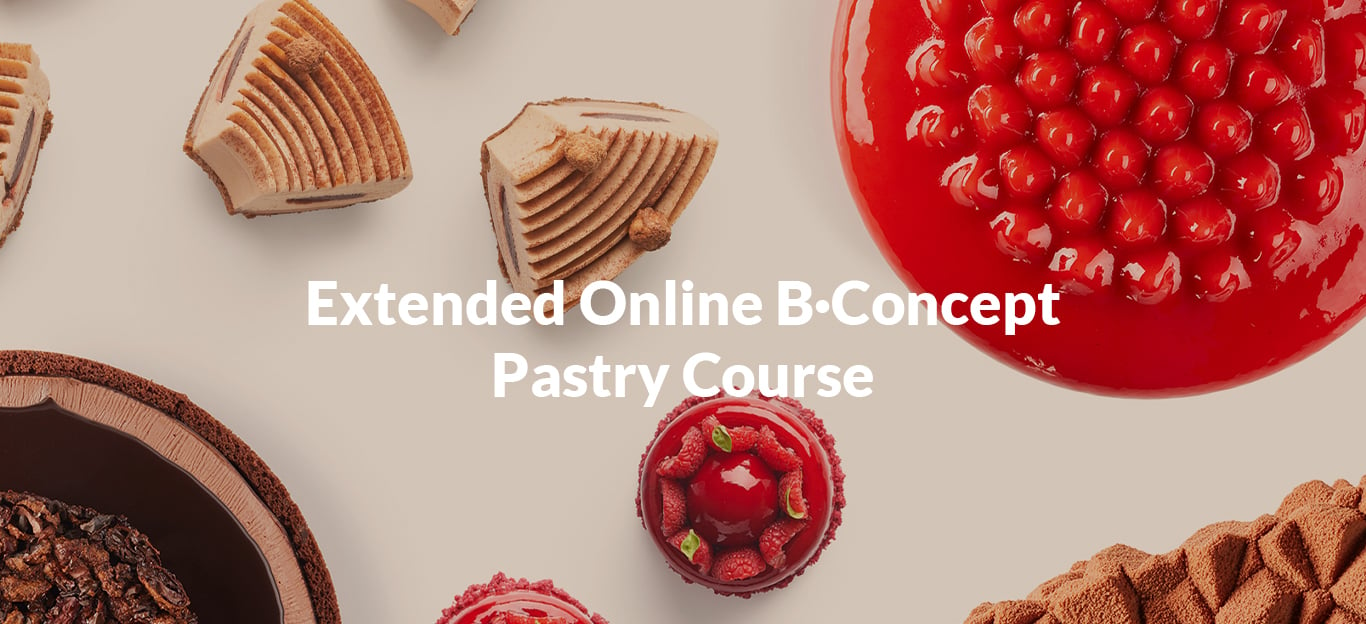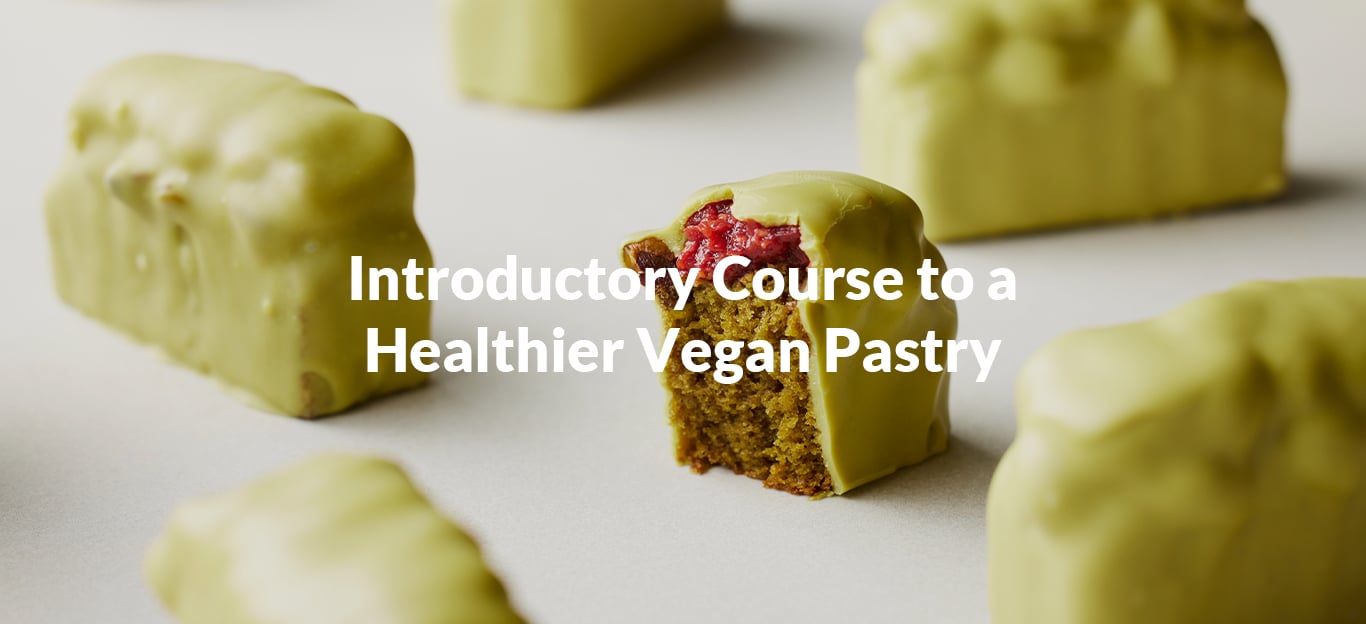
Inulin: a healthy and nutritional ingredient for use in pastry
It might sometimes go unnoticed, but a very important part of our time is spent on R&D&I. The research, development and innovation department, directed by Adrianna, continually studies and tests new ingredients, looking for their possible applications in the recipes we formulate with the the B·Concept method.
Then, we transfer this knowledge to the course theory and recipes dossier so that you have it available during our explanations and whenever you may need it. We never keep anything to ourselves, trying to share all we know and has been useful, so we want to pass on a small part of this research telling you more about inulin.
An essential part: water controlling
When creating a recipe, our primary goal is always to understand chef’s and customer’s needs. Controlling water amount and water activity within a recipe is often one of chef’s priorities. And in recipes such as creamies, mousses or compotes, which contain a lot of water or need to be frozen, controlling the amount of free water becomes critical.
We can control the water in a recipe with different techniques, but often it means depending on ingredients with a high percentage of dry extract, like fats or sugars. Inulin is an ingredient that not only acts like a "solid", thanks to its high dry extract percentage, but also has a great water catching capacity (also called water-binding capacity) and properties similar to those of fat or sugar. Therefore, it responds perfectly to chef's needs.
Discovering inulin
Inulin is a non-digestible carbohydrate belonging to the fructan group of polysaccharides. It is composed of linear chains of fructose attached to a glucose molecule. It is naturally present in many vegetables, fruits and cereals: chicory root, dandelion root, asparagus, leeks, onions, bananas, plantains, sprouted wheat, garlic, artichokes, among others. Inulin powder is extracted mainly from chicory roots, although there are also inulin varieties extracted from blue agave plant.

20%.

16 - 20%.

9 - 11%.

3 - 10%.

2 - 6%.

1 - 6%.
Thanks to Antonio Sirvent, – our friend and an exceptional ice cream artisan – we have discovered this ingredient a while ago, and it has proven to be a meaningful technical and nutritional breakthrough in our process of recipe creation. Following many tests, we consider inulin a key ingredient that, in our opinion, marks the future of pastry. It allows us to create healthier, lighter and tastier recipes.
Benefits of using inulin
From the technical point of view, inulin is a perfect ingredient as it is composed of almost 100% of dry extract, it has a great water catching capacity and minimal sweetening power. Moreover, due to its technical properties, it can help build texture and mouthfeel similar to fats (1). It also provides stability during the freeze-thaw process, slightly lowers the freezing point and inhibits water crystals growth (2).
Other than its functional properties, one of the big advantages of working with inulin are its nutritional benefits. Being a prebiotic and a dietary fiber from natural source it helps lower lipid and glucose blood levels (3). The energy value of inulin is around 200 kcal / 100 g (depending on the manufacturer), significantly lower than other ingredients as sugar, which is 380 kcal / 100 g. It also has a significantly lower glycemic index and does not influence blood glucose levels the way sugar does.
Finally, the use of inulin can help us maximize the flavour of another ingredient. As we have noticed in our B·Concept research, excessive use of some ingredients can overshadow the taste of the main ingredient in the recipe. Inulin’s taste is neutral and its sweetness is hardly noticeable, so it helps us build flavour in the best possible way.
Application of inulin in recipes
Since we have come across this ingredient, we have been using inulin in different kind of recipes, e.g. meringues, compotes, creamies, glazes or sponges. When we replace sugars or part of sugars with inulin we obtain stable textures that support freezing well, with balanced sweetness levels . We also don’t lose sight of our basic goal: to boost the flavour of the main ingredient and fulfil chef’s and consumer’s needs.
We can find several kinds of inulin on the market that differ in terms of chain length, solubility, fiber content, sweetening power and texturizing properties. Due to its good dispersability and low sweetness level, we use instant quality native inulin (native inulin of instant quality) in a variety of recipes as a texture agent as well as sugar replacement.
Instant quality native inulin
- It is obtained through spray drying of inulin juice obtained from chicory roots (see infographic);
- It's composed of a mix of long, medium and short chain inulin.
- It is composed of 90% or more of inulin and a 10% or less of fructose, glucose and sucrose; its glycemic index is 14 and its sweetening power is 0,1.
- It disperses well during hydration and needs no heating.
- It has good water catching capacity, lowers the activity of water and favours microbiological stability.
- It creates synergy with intense sweeteners and is commonly used as a sugar substitute.
- It is distributed and labelled as "cold inulin"(Sosa).

Oligofructose
Another interesting product derived from inulin is oligofructose – a partially hydrolized inulin (see graphic) that is slightly sweeter than inulin (sweetening power between 0,4 – 0,5) and exists both in syrup and powder form. Its elevated sweetening power is due to the fact that it is composed of shorter inulin chains as well as free fructose molecules. Its physico-chemical properties are similar to that of inulin, which makes it a note-worthy ingredient for preparations that call for a higher level of sugar substitution.

IMPORTANT NOTE: Inulin undergoes hydrolysis and become fructose, losing its functional properties, in environments with a pH lower than 4. For this reason, it is not recommended to use inulin in preparations with highly acidic fruits.
All this is just an extract of the theoretical part that we explain in our Extended Online B·Concept Pastry Course. If you think it is interesting, we welcome you to join us at our School to continue learning together.





